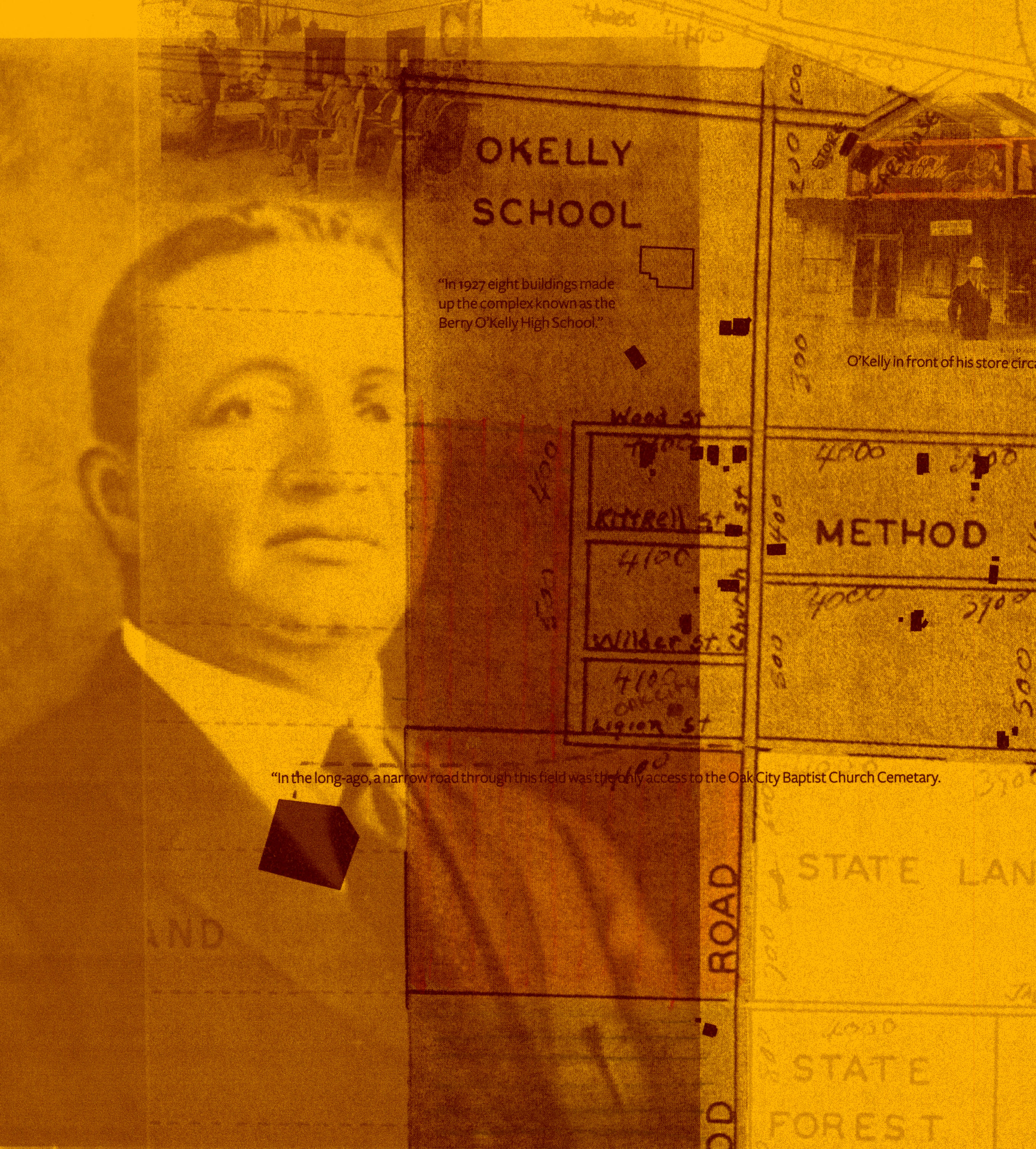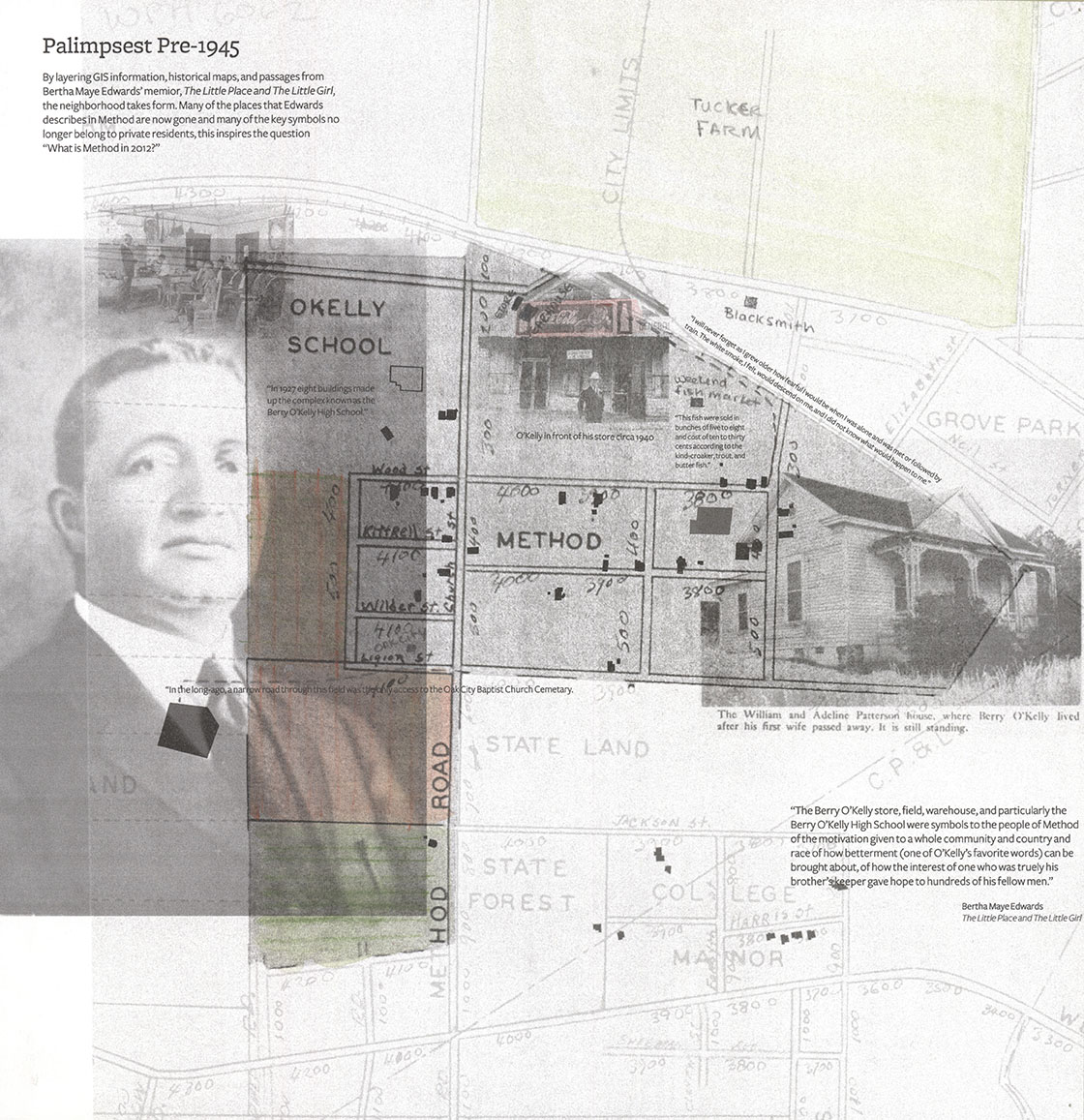March 02 – April 06 | 4 weeks | Research Methodology: Case Study Research | Mapping Methodology: Network Maps
Case Study research seeks to understand a larger phenomena by looking specifically at one instance or case as a starting point. Many times, case study research aims to find causal and correlational relationships. This second series of maps will use mapping and case study research to better understand Raleigh’s history as a network and system of relationships. These maps will build on the set you created in your first map series. The maps that you create will take the form of a network map—where people, events and places are connected together in smaller and larger networks. While you might use geo-spatial mapping to locate a particular person/place or event, the dominant structure of this map should not be geospatial.
Based on the research question(s) you identified at the end of project #1, you will be given a series of markers, stories and official and unofficial histories to form the basis of your network map. Your research will expand beyond the narratives supplied to focus on a minimum of 20 “markers” that relate to your research question/topic.Your map(s) should clearly articulate connections between people, places, events to hint at larger philosophies and systems of belief and how that affected the infrastructural development of the city.
Learning Objectives:
- Draw connections between demographic data (quantitative) and contextual information (qualitative);
- Introduce students to concepts of case study research;
- Make critical judgements on the effect visualization has on the belief in the map;
- Make visual comparisons between macro and micro data;
- Understand the map as a persuasive and narrative device;
- Introduction of mapping in time-based software.
Assignment Schedule
March 02: Project Introduction
- Lecture/Discussion: NetworkMaps and Case Study Research
- Developing a Research Question
- Exposure to associated historical documents
Read for March 16:
- Crouch and Pearce, Chapter 04: Research Methodologies.
- Skim: Meirelles, Relational Structures: Networks (p46-81)
March 16: Case Study Research
- Due: 20 nodes; Visualizations of Network Structures.
- Discussion: Drawing conclusions
Read for March 23:
- Meirelles, Relational Structures: Networks (p46-81)
- Crouch and Pearce, Chapter 08, Case Study Research, p123-141.
- Image Case Study: Orf, K.and Misrach, R. Petrochemical America
- Research Source: An Unorthodox History, Lancaster, General Themes (on Reserve in the Design Library):
Chapter 01 (p1): Crime, Laws, Politics (Ashlee, Skylar, Candida)
Chapter 02 (p32): Infrastructure, City Life (Steph, Kirsten, Jason, Julia, Sarah)
Chapter 03 (p64): Infrastructure, Culture, Religion (Caroline, Jason)
Chapter 04 (p87): Education + Access (Amanda, Candida)
Chapter 05(p103): Religion (Jason, Steph)
Chapter 06 (p122): Lawful Discrimination (Ashlee, Amanda, Austin)
Chapter 07 (p143): Celebrations + Entertainment (Steph)
Chapter 08 (p166): Roads, Travel, Building (Austin, Virginia, Julia, Sarah)
Chapter 09 (p196): Newspapers, Advertising (Stephanie, Skylar )
Chapter 10 (p214): General “indecency” (everyone…)
Chapter 11 (p231): Wheeling and Dealing (everyone…) - Assignment of historical markers
- Assignment for March 23:
- Continue to research official/visible (marked/memorialized) and unofficial/invisible histories, clarifying your nodes. Highway Marker information here and here
- Create one synthetic draft of your relational map.
- Explore Density Design’s RAW data visualization software (open source, online)
March 23: In Progress Review
- Due: Review of map progress. 1-2 digitized explorations and 1 synthetic, more developed map
- Image Case Study
- Sign up for one-on-ones with Sara/Tania on Tuesday, Wednesday or Thursday
March 30: No Class
April 06: Final Review of Maps
- Read for March April 13:
Crouch and Pierce:
Case Study: MarhurCunha, MississippiFloods

